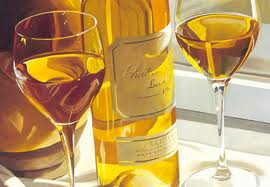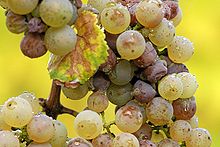Sweet Wine - Not Only for Christmas

An introduction to a less well known category of wine
The media ignore sweet wines for more than eleven months of the year and then, as Christmas approaches, they do get a mention, sometimes under the heading “Pudding Wines”. The articles in the Sunday supplements may be confusing and unhelpful, partly because they mix very different kinds of wine.
Firstly, they mix table wines with “fortified” wines. The latter (port, Madeira, sherry) have had brandy added to them at some time during the fermentation, and contain 17-18% alcohol, whereas table wines will have 7-14%. Secondly, among the table wines they will list some wines of real quality, as well as cheap wines. But cheap sweet wines are sweet.… and that is about all. Thirdly, good table wines do not go with puddings! Good puddings, such as English Christmas pudding, have (good) strong flavours which completely spoil one’s possibility of appreciating a good glass of wine.
There are no good sweet red wines, and the best whites are mostly from France and Germany. Top sweet whites are:
1) Sauternes, from Bordeaux. They are made from the Semillon and Sauvignon Blanc grapes which, separately, make indifferent wines (though the Sauvignon Blanc wines of the Loire, and from New Zealand, have their enthusiastic supporters- but subtle, they are not). The best of these wines are made from very ripe late-harvested grapes infected with “noble rot” (“pourriture noble”). This is a mould which renders the grape skins porous, making them raisin-like while still on the vine. The must (juice after pressing) is therefore very high in natural sugars and there will be a lot of residual sugar in the wine.
These wines have, for table wines, a high alcohol content- often 14%, and are “heavy”. Sleepiness and possibly a headache if you indulge too much, are a natural consequence. Though undoubtedly delicious, some find them unbalanced. Apart from the high alcohol content, they are also relatively low in acidity- altogether, a bit overwhelming. However, they attract adjectives like “luscious”. The best should really not be drunk for ten years. So, for now, it’s 1995-98, if you can afford them. Brilliant with pâté de foie gras, and with Roquefort cheese. Definitely not with meat.
2) Sweet Riesling, from Germany. The Riesling is an amazing grape. It makes good dry wines, and superlative sweet ones. It can be drunk with enjoyment when young and at all ages, although the best will take at least 20 years to mature. It ripens late and does not give a high yield, and yet it is in rather northern areas, often on southerly slopes by a river, that the finest wines are produced, by the Rhine and its tributaries, the Main, the Nahe, and the Mosel. To keep it simple: in the German wine area Mosel-Saar-Ruwer (the two latter are tributaries of the Mosel) wonderful Rieslings are produced, the sweet ones having an alcohol content typically of 7 ½ to 8%. They are light, fruity, fresh- “delightful”. Look for the designation “Spätlese” (late harvested) and, a grade above, “Auslese” (meaning that the wine has been made from selected ripe bunches during the second (ie late) harvest). As in France, there will also sometimes be wines infected with noble rot (“Edelfäule”), and then there can be a wonderful balance between sweetness and light acidity. Wines designated “Trocken” will be dry, with more alcohol.
In the other designated German wine areas- the ones from which wines in England can be found are: Rheingau, Palatinate (Rheinpfalz), Rheinhessen and Nahe- the best wines will also almost always be from the Riesling grape, and the sweet wines will have an alcohol content of about 11%. There is a strong tradition of making single-vinyard (ie unblended) wines, such as Wehlener Sonnenuhr, Ürziger Würzgarten, Brauneberger Juffer, Nackenheimer Rothenberg, Niederhäuser Hermannsberg, Kiedricher Grafenberg....They are really best drunk on their own, or with a not strongly flavoured cake. It is supposed that they do not go with meat: but roast goose with a fine Auslese… that is something…
Don’t just swallow. Take a smallish sip, leave in the mouth, slosh it around, and wait: a whole series of tastes will emerge.
Quality, not quantity. Why not pay more, and get a memorable wine?
Tilo Ulbricht

